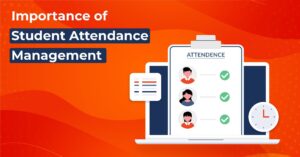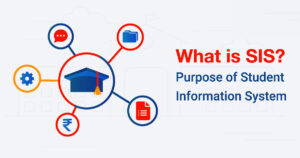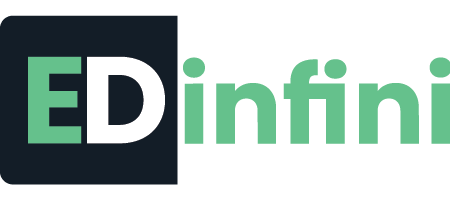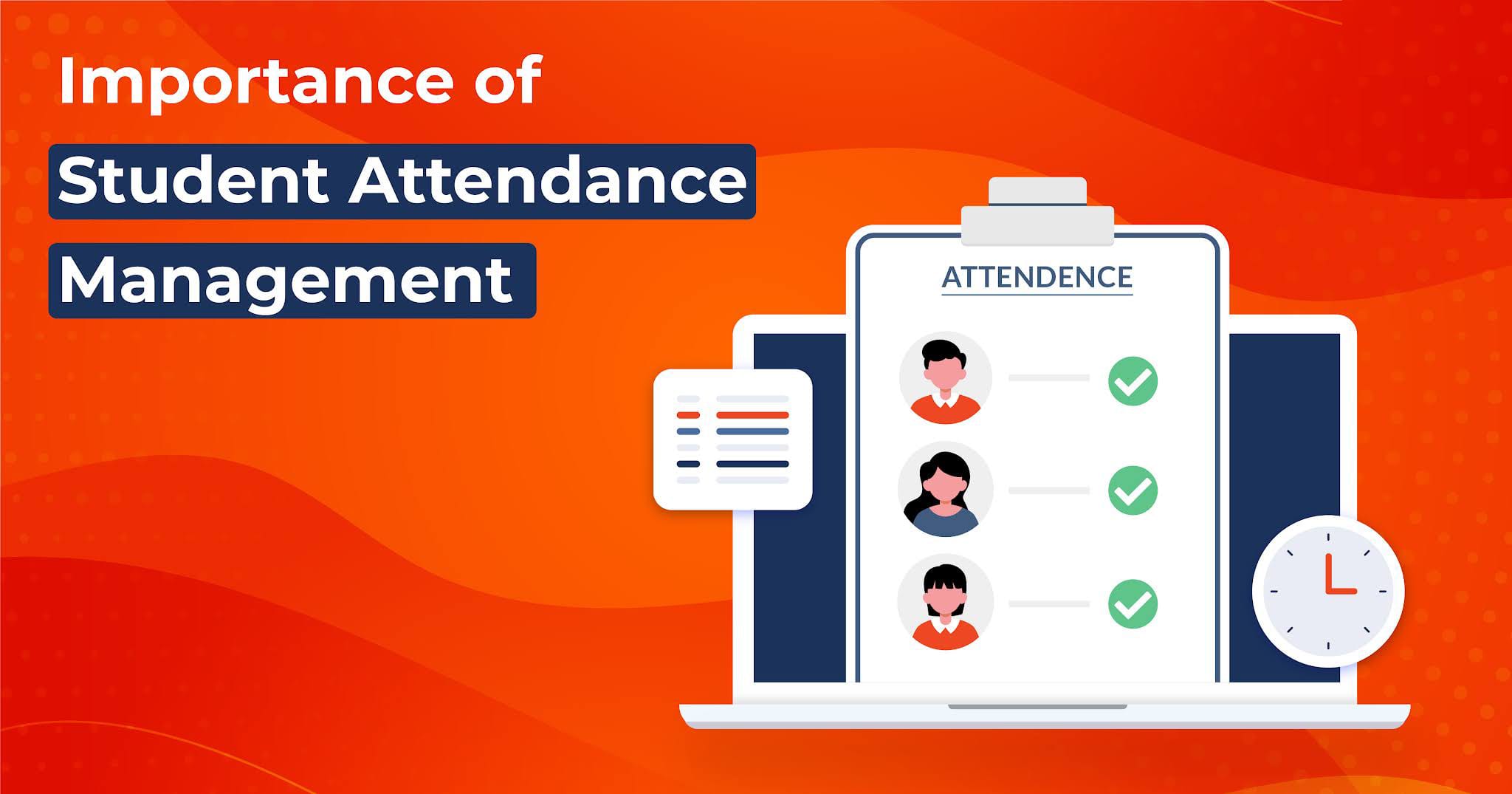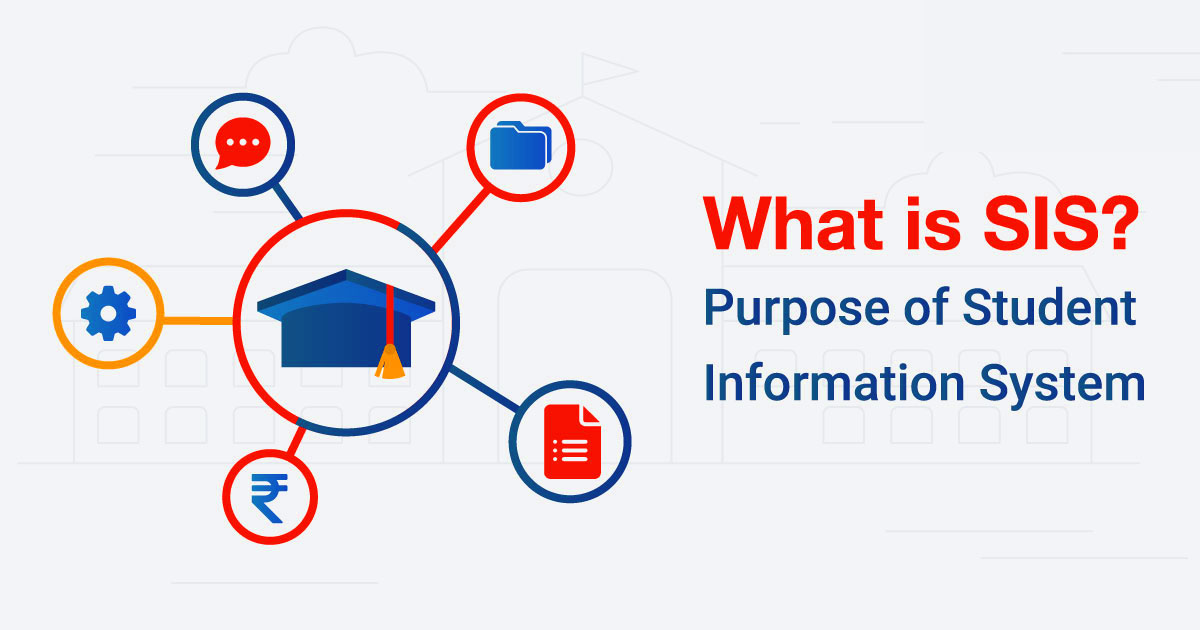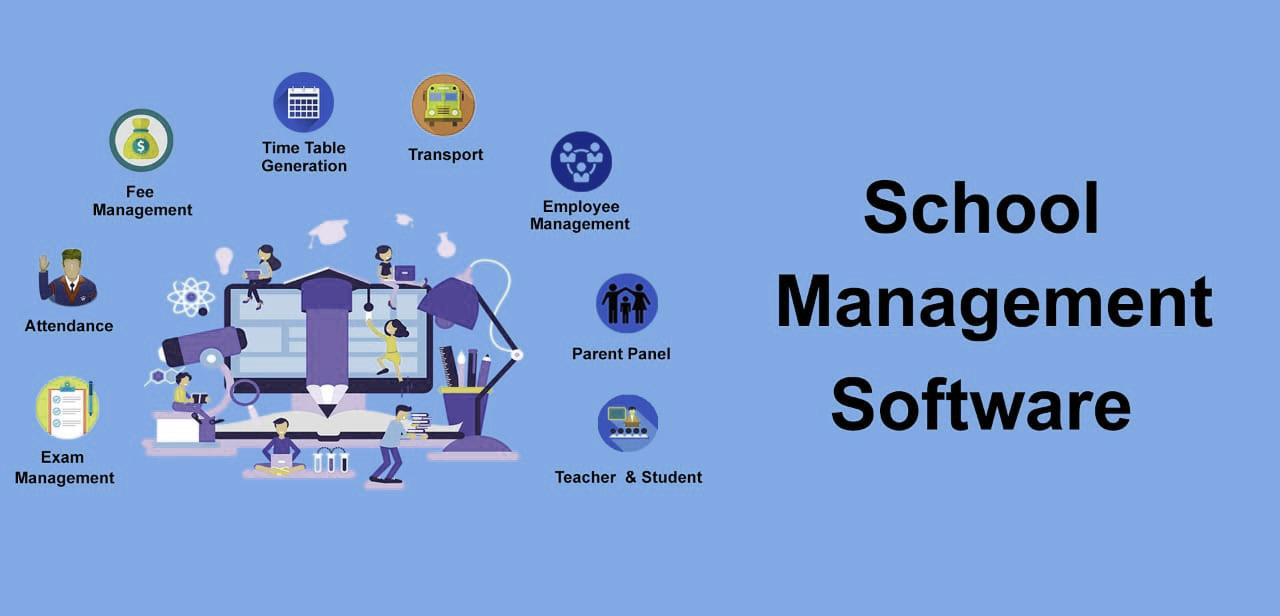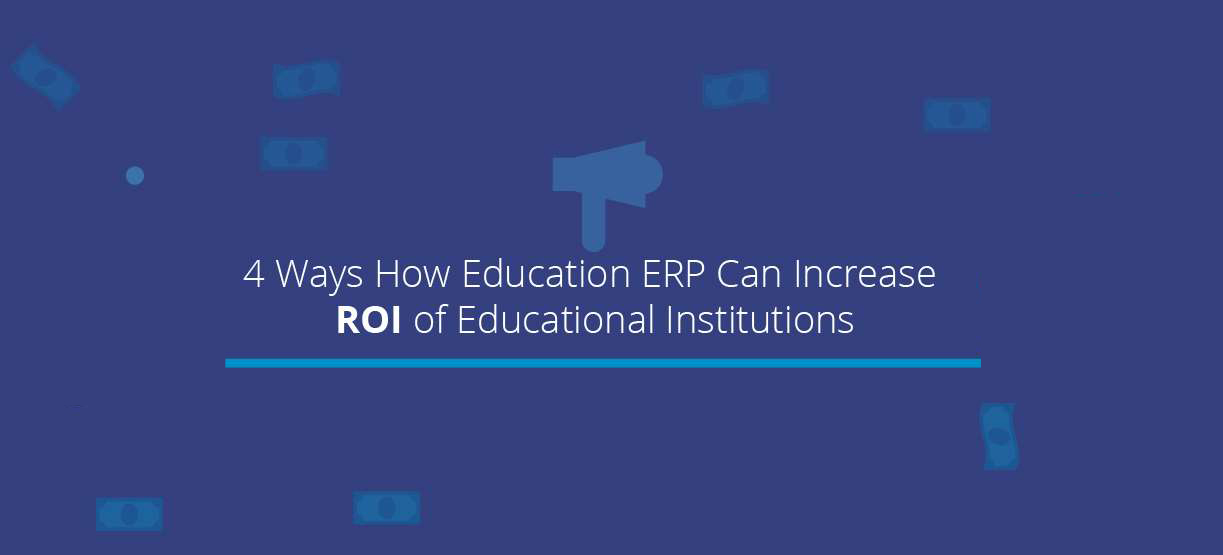A comprehensive guide to Student Information Systems
Imagine being able to manage all the information related to your students in one place. From their personal details, academic records, financial data, attendance, and grades, to their communication preferences, interests, and goals. Sounds too good to be true, right? Well, not anymore. Thanks to the advancement of technology, there is a solution that can help you do just that: Student Information Systems.
Student Information Systems, or SIS for short, are software applications that are designed to store and manage student-related data in educational institutions. They can help you streamline administrative tasks, improve data accuracy, enhance communication, increase student engagement, and more. In this article, we will provide you with a comprehensive guide to Student Information Systems: what they are, how they work, what benefits they offer, and how to choose the best one for your institution. Whether you are a teacher, an administrator, a student, or a parent, you will find this article useful and informative.
What is a Student Information System?
A Student Information System, or SIS, is a software application that helps educational institutions manage and store student-related data. It serves as a core system of record for student information and supports routine administrative and academic activities. A SIS can handle various types of data, such as:
- Personal information: name, address, contact details, emergency contacts, etc.
- Academic records: courses, grades, transcripts, credits, etc.
- Financial data: fees, payments, scholarships, financial aid, etc.
- Attendance: class attendance, absences, tardiness, etc.
- Communication: messages, announcements, feedback, etc.
A SIS can also provide a student portal that allows students to access their own information and perform tasks such as registering for courses, checking grades, paying fees, and communicating with teachers and peers. A SIS can also provide a faculty portal that allows teachers to manage their classes, assignments, assessments, and communication with students.
A SIS can benefit educational institutions in many ways. It can streamline administrative tasks, improve data accuracy, enhance communication, increase student engagement, and more.
The latest trends on Student Information Systems
Student Information Systems are not only useful tools for managing student data, but also for keeping up with the latest trends and innovations in the education industry. The global student information system market size was valued at USD 8.60 Billion in 2021 and is projected to reach USD 30.2 Billion by 2030, growing at a CAGR of 14.98 % from 2022 to 2030. Some of the factors driving this growth are:
- Increased digitization and e-learning: The COVID-19 pandemic has accelerated the adoption of online education and digital platforms, creating a high demand for SIS software and services. SIS can help educational institutions provide seamless and flexible learning experiences for students, regardless of their location and time zone.
- Integration of advanced technologies: SIS software and services are incorporating emerging technologies such as artificial intelligence, cloud computing, big data analytics, and blockchain to enhance their functionality and performance. These technologies can help SIS provide personalized learning, data-driven insights, improved security, and transparency.
- Focus on student success and retention: SIS software and services are also focusing on improving student outcomes and satisfaction by providing features such as academic advising, career planning, student engagement, feedback, and support. SIS can help educational institutions identify students’ needs, strengths, weaknesses, and interests, and provide them with tailored guidance and resources.
These trends indicate that SIS software and services are evolving to meet the changing needs and expectations of students, educators, administrators, and parents in the modern education landscape.
Why Student Information Systems are important in Educational Institutions?
For Management
Student Information Systems are not greatly beneficial for administrators who are responsible for managing the overall operations and performance of educational institutions. Administrators can use SIS software and services to perform various tasks and functions that can improve their efficiency, effectiveness, and decision-making. Some of the reasons why SIS are important for administrators are:
Streamlining administrative tasks
SIS can help administrators automate and simplify many administrative tasks that would otherwise require manual work and paper-based processes. For example, SIS can help administrators with:
- Student recruitment and enrollment: SIS can help administrators manage the entire process of attracting, registering, and admitting new students, as well as transferring or withdrawing existing students.
- Class scheduling: SIS can help administrators create and update class schedules, assign teachers and rooms, and handle conflicts and changes1.
- Grading and reporting: SIS can help administrators collect and record grades from teachers, generate transcripts and certificates, and monitor student progress and performance.
- Attendance tracking: SIS can help administrators track student attendance, mark absences and tardiness, and send alerts and notifications to parents and teachers.
- Fee collection and financial aid: SIS can help administrators manage student accounts, fees, payments, scholarships, financial aid, and invoices.
By streamlining these administrative tasks, SIS can help administrators save time, reduce errors, increase productivity, and focus on more strategic activities.
Providing a single source of truth
SIS can provide administrators with a single source of truth for all student-related data. This means that administrators can access the information they need quickly and easily without having to search through multiple systems or databases. This can also improve data accuracy, consistency, and security, as information only needs to be entered once and is then available across the system. For example, SIS can provide administrators with:
- Student profiles: SIS can store all the personal information of students, such as name, address, contact details, emergency contacts, etc.
- Student records: SIS can store all the academic records of students, such as courses, grades, transcripts, credits, etc.
- Student data: SIS can store all the financial data of students, such as fees, payments, scholarships, financial aid, etc.
- Student communication: SIS can store all the communication preferences of students, such as messages, announcements, feedback, etc.
By providing a single source of truth for student data, SIS can help administrators access the information they need anytime and anywhere.
Improving communication and collaboration
SIS can help administrators improve communication and collaboration with other stakeholders in the education system. SIS can enable administrators to:
- Communicate with students: SIS can help administrators send messages, announcements, feedback, and reminders to students via email or SMS. SIS can also provide a student portal that allows students to access their own information and perform tasks such as registering for courses, checking grades, paying fees, and communicating with teachers and peers.
- Communicate with parents: SIS can help administrators send reports, alerts, notifications
For Teachers?
Student Information Systems are also important for teachers who are responsible for delivering quality education and enhancing student learning outcomes. Teachers can use SIS software and services to perform various tasks and functions that can improve their efficiency, effectiveness, and satisfaction. Some of the reasons why SIS are important for teachers are:
Managing student information
SIS can help teachers manage student information in a convenient and organized way. Teachers can use SIS to:
- Access student profiles: SIS can provide teachers with access to student profiles that contain personal information, academic records, financial data, and communication preferences.
- Update student records: SIS can allow teachers to update student records such as grades, attendance, feedback, and comments.
- Monitor student progress: SIS can enable teachers to monitor student progress and performance based on various indicators such as test scores, assignments, quizzes, and projects.
- Identify student needs: SIS can help teachers identify student needs, strengths, weaknesses, and interests, and provide them with tailored guidance and resources.
By managing student information, SIS can help teachers save time, reduce errors, increase productivity, and focus on more strategic activities.
Enhancing communication and collaboration
SIS can help teachers enhance communication and collaboration with other stakeholders in the education system. SIS can enable teachers to:
- Communicate with students: SIS can help teachers send messages, announcements, feedback, and reminders to students via email or SMS. SIS can also provide a student portal that allows students to access their own information and perform tasks such as registering for courses, checking grades, paying fees, and communicating with teachers and peers.
- Communicate with parents: SIS can help teachers send reports, alerts, notifications, and feedback to parents via email or SMS. SIS can also provide a parent portal that allows parents to access their children’s information and perform tasks such as paying fees, checking attendance, and communicating with teachers and administrators.
- Communicate with administrators: SIS can help teachers send reports, requests, suggestions, and feedback to administrators via email or SMS. SIS can also provide an administrator portal that allows administrators to access teacher’s information and perform tasks such as approving courses, assigning rooms, and communicating with teachers and staff.
- Communicate with peers: SIS can help teachers communicate with their peers via email or SMS. SIS can also provide a faculty portal that allows teachers to access their colleagues’ information and perform tasks such as sharing resources, collaborating on projects, and providing support.
By enhancing communication and collaboration, SIS can help teachers improve their relationships, engagement, and satisfaction with other stakeholders in the education system.
For Students and Parents
Student Information Systems are also important for students and parents who are the primary beneficiaries of the education system. Students and parents can use SIS software and services to perform various tasks and functions that can improve their access, involvement, and satisfaction. Some of the reasons why SIS are important for students and parents are:
Accessing student information
SIS can help students and parents access student information in a convenient and secure way. Students and parents can use SIS to:
- Access student profiles: SIS can provide students and parents with access to student profiles that contain personal information, academic records, financial data, and communication preferences.
- Access student records: SIS can provide students and parents with access to student records such as grades, attendance, feedback, and comments.
- Access student data: SIS can provide students and parents with access to student data such as fees, payments, scholarships, financial aid, and invoices.
- Access student communication: SIS can provide students and parents with access to student communication such as messages, announcements, feedback, and reminders.
By accessing student information, SIS can help students and parents stay informed, updated, and involved in the education process.
Performing online tasks
SIS can help students and parents perform online tasks that would otherwise require physical visits or paper-based processes. Students and parents can use SIS to:
- Register for courses: SIS can allow students to register for courses online, view course catalogs, check availability, and make changes.
- Pay fees: SIS can allow students and parents to pay fees online, view invoices, check balances, and make payments.
- Apply for financial aid: SIS can allow students and parents to apply for financial aid online, view eligibility criteria, check status, and receive notifications.
- Communicate with teachers and administrators: SIS can allow students and parents to communicate with teachers and administrators online, send messages, receive feedback, and request support.
By performing online tasks, SIS can help students and parents save time, reduce hassle, increase convenience, and enhance satisfaction.
Improving learning outcomes
SIS can help students and parents improve learning outcomes by providing features that support academic success. Students and parents can use SIS to:
- Monitor student progress: SIS can help students and parents monitor student progress and performance based on various indicators such as test scores, assignments, quizzes, and projects.
- Identify student needs: SIS can help students and parents identify student needs, strengths, weaknesses, and interests, and provide them with tailored guidance and resources.
- Engage in learning activities: SIS can help students engage in learning activities such as accessing course materials, submitting assignments, taking quizzes, and participating in discussions.
- Receive academic advising: SIS can help students receive academic advising such as choosing courses, planning career paths, setting goals, and receiving support.
By improving learning outcomes, SIS can help students and parents achieve their academic potential and aspirations.
Are higher-education Student Information Systems different?
Depending on the type and level of education, SIS may have different features, functions, and requirements. In this section, we will compare and contrast higher-education SIS with other types of SIS, such as K-12 SIS and vocational SIS.
Higher-education SIS are SIS that are specifically designed for higher education institutions, such as universities and colleges. They serve as a core system of record (SOR) for higher education institutions and support routine administrative and academic activities.
Higher-education SIS can manage a variety of data related to students, such as academic records, personal information, financial data, and communication preferences. Higher-education SIS can also provide portals that allow users to access their own information and perform tasks such as registering for courses, checking grades, paying fees, applying for financial aid, sending feedback, and requesting support.
Some of the features and functions that are unique or more prominent in higher-education SIS are:
Course catalog and registration system
Higher-education SIS can provide a course catalog and registration system that allows students to browse, search, and enroll in courses online. The system can also handle course prerequisites, waitlists, drop/adds, withdrawals, and transfers.
Degree audit and academic advising system
Higher-education SIS can provide a degree audit and academic advising system that allows students to track their progress toward their degree requirements, plan their course sequence, and receive guidance from academic advisors.
Financial aid and scholarship management system
Higher-education SIS can provide a financial aid and scholarship management system that allows students to apply for various types of financial assistance, such as grants, loans, scholarships, work-study, etc. The system can also handle eligibility criteria, disbursement rules, verification processes, and reporting requirements.
Alumni relations and fundraising system
Higher-education SIS can provide an alumni relations and fundraising system that allows institutions to maintain contact with their alumni, solicit donations, manage campaigns, track gifts, and generate reports.
How to Select the Best Student Information Systems – 10 Factors You Should Look For
Not all Student Information Systems (SIS) are the same. Depending on the type and level of education, the size and scope of the institution, the budget and resources available, and the specific needs and goals of the stakeholders, different SIS may have different features, functions, and requirements. Therefore, choosing the best SIS for your institution can be a challenging task.
To help you with this process, here are 10 factors you should look for when selecting a SIS for your institution:
1. Is it a comprehensive solution that will evolve with you?
Look for a SIS that can handle all aspects of student information management, from recruitment and enrollment to graduation and alumni relations. A comprehensive SIS can provide you with a single source of truth for all student-related data, streamline administrative tasks, improve communication and collaboration, and increase student engagement and success. Moreover, look for a SIS that can evolve with your institution as it grows and changes over time. A scalable and adaptable SIS can accommodate new programs, courses, regulations, technologies, and user expectations without compromising its functionality and performance.
2. Does it have built-in analytics?
Look for a SIS that can provide you with built-in analytics that can help you monitor, measure, and improve your institution’s performance. A data-driven SIS can help you track key indicators such as enrollment rates, retention rates, graduation rates, student satisfaction, academic achievement, financial aid distribution, and more. A data-driven SIS can also help you generate reports and dashboards that can provide you with insights and recommendations for decision-making and action-taking.
3. Does it meet the needs of your kind of learners?
Look for a SIS that can meet the needs of your kind of learners, whether they are traditional or nontraditional, full-time or part-time, on-campus or online, domestic or international, etc. A learner-centric SIS can provide you with features and functions that can support different types of learners in different modes of delivery. For example, a learner-centric SIS can provide online registration, payment, and communication options for online learners; flexible scheduling, grading, and advising options for part-time learners; multilingual and multicultural options for international learners; etc.
4. Does it help you manage communications?
Look for a SIS that can help you manage communications with different stakeholders in the education system, such as students, parents, teachers,administrators, and alumni. A communication-friendly SIS can help you send and receive messages, announcements, feedback, and reminders via email or SMS. A communication-friendly SIS can also provide portals that allow users to access their own information and perform tasks such as registering for courses, checking grades, paying fees, applying for financial aid, sending feedback, and requesting support. A communication-friendly SIS can also help you integrate with other communication tools such as social media, videoconferencing, chatbots, etc.
5. Is it flexible to adapt to your current and future needs?
Look for a SIS that can adapt to your current and future needs without requiring extensive customization or configuration. A flexible SIS can help you adjust to changing regulations, standards, policies, and practices in the education industry. A flexible SIS can also help you incorporate new features, functions, and technologies as they become available or necessary. A flexible SIS can also help you integrate with other systems and platforms that you use or plan to use in your institution, such as learning management systems, enterprise resource planning systems, customer relationship management systems, etc.
6. Does it have actionable retention solutions inside the framework?
Look for a SIS that can help you improve student retention and completion rates by providing actionable solutions inside the framework. A retention-focused SIS can help you identify students who are at risk of dropping out or failing to graduate, and provide them with interventions and support. A retention-focused SIS can also help you engage students in learning activities, provide them with feedback and guidance, and recognize their achievements and milestones. A retention-focused SIS can also help you collect and analyze student feedback and satisfaction data, and use them to improve your services and offerings.
7. Does it have an integrated ERP?
Look for a SIS that has an integrated ERP (Enterprise Resource Planning) system that can help you manage the financial and operational aspects of your institution. An integrated ERP system can help you manage student accounts, fees, payments, scholarships, financial aid, invoices, etc. An integrated ERP system can also help you manage human resources, payroll, inventory, procurement, budgeting, accounting, etc. An integrated ERP system can also help you generate financial reports and statements that can provide you with insights and recommendations for financial management and planning.
8. Does it have a user-friendly interface?
Look for a SIS that has a user-friendly interface that can provide you with a smooth and intuitive user experience. A user-friendly interface can help you navigate the system easily and quickly, find the information and functions you need without difficulty, and perform tasks without errors or delays. A user-friendly interface can also help you customize the system according to your preferences and needs, such as changing the language, layout, color, font, etc. A user-friendly interface can also help you access the system from any device, browser, or platform, such as desktop, laptop, tablet, smartphone, etc.
9. Does it have a reliable and responsive support team?
Look for a SIS that has a reliable and responsive support team that can provide you with technical and functional assistance whenever you need it. A supportive SIS vendor can help you with installation, configuration, integration, training, maintenance, troubleshooting, upgrading, etc. A supportive SIS vendor can also help you with feedback, suggestions, requests, complaints, etc. A supportive SIS vendor can also help you with security, backup, recovery, etc.
10. Does it have a reasonable and transparent pricing model?
Look for a SIS that has a reasonable and transparent pricing model that can provide you with value for money. A cost-effective SIS can help you with pricing options that suit your budget and needs, such as subscription-based, pay-per-use, one-time payment, etc. A cost-effective SIS can also help you with pricing details that are clear and upfront, such as features included, fees charged, discounts offered, etc. A cost-effective SIS can also help you with pricing guarantees that are fair and consistent, such as refunds, cancellations, renewals, etc.
These are some of the factors you should look for when selecting a SIS for your institution. However, these are not the only factors you should consider. Depending on your specific situation and goals, you may have other criteria that are more important or relevant to you. Therefore, before you make a final decision, you should do your own research, compare different options, ask for demos and trials, and consult with experts and peers who have experience with using SIS. By doing so, you can ensure that you choose the best SIS that can meet your expectations and requirements.
How Can You Overcome the Most Common Issues When Using a Student Information System?
Using Student Information Systems (SIS) can also pose some challenges and issues that can affect the user experience and the system performance. Some of the most common issues when using a SIS are:
Ineffective staff training
One of the main challenges when using a SIS is ensuring that the staff who use the system are properly trained and equipped with the necessary skills and knowledge. Ineffective staff training can result in low user adoption, poor data quality, increased errors, reduced productivity, and decreased satisfaction. To overcome this issue, you should:
- Provide adequate and timely training for all staff who use the system, including administrators, teachers, students, and parents.
- Use various methods and formats of training, such as online courses, webinars, videos, manuals, guides, etc.
- Customize the training according to the user roles, needs, and preferences.
- Provide ongoing support and feedback for the users, such as help desks, forums, FAQs, etc.
- Evaluate the training outcomes and impact on the user performance and satisfaction.
Inefficient technical support
Another challenge when using a SIS is dealing with technical issues that may arise from time to time, such as system glitches, bugs, crashes, downtime, etc. Inefficient technical support can result in frustration, dissatisfaction, loss of data, disruption of operations, and damage to reputation. To overcome this issue, you should:
- Choose a reliable and reputable SIS vendor that can provide you with quality technical support and service.
- Establish clear and transparent communication channels with the vendor, such as phone, email, chat, etc.
- Define the service level agreements (SLAs) with the vendor, such as response time, resolution time, availability, etc.
- Monitor the system performance and report any issues or problems to the vendor as soon as possible.
- Seek alternative solutions or backup plans in case of system failure or outage.
Inability to track and process student records efficiently
A third challenge when using a SIS is ensuring that the student records are tracked and processed efficiently and effectively. Inability to track and process student records efficiently can result in inaccurate data, incomplete information, delayed services, missed opportunities, and compliance issues. To overcome this issue, you should:
- Use a SIS that can handle various types of student records, such as personal information, academic records, financial data, attendance, communication, etc.
- Use a SIS that can integrate with other systems and platforms that you use or plan to use in your institution, such as learning management systems, enterprise resource planning systems, customer relationship management systems, etc.
- Use a SIS that can provide you with built-in analytics that can help you monitor, measure, and improve your institution’s performance based on student data.
- Use a SIS that can provide you with features and functions that can support different types of learners in different modes of delivery, such as online registration, payment, communication, etc.
- Use a SIS that can provide you with features and functions that can improve student retention and completion rates by providing interventions and support.
These are some of the most common issues when using a SIS and how you can overcome them. However, these are not the only issues you may encounter. Depending on your specific situation and goals, you may face other challenges and problems that require different solutions. Therefore, you should always be prepared to troubleshoot and resolve any issues or problems that may arise when using a SIS. By doing so, you can ensure that you use the SIS effectively and efficiently to achieve your desired outcomes.
Onsite vs Cloud-Based Student Information Systems
When choosing a Student Information Systems (SIS) for your institution, you need to consider the deployment model that suits your needs and preferences. There are two main deployment models for SIS: onsite and cloud-based.
Onsite SIS involves installing the software on your local servers and managing all aspects of your system in-house. This approach offers greater control and customization options, but it requires a significant investment in hardware, software, and IT personnel. Onsite SIS also requires server maintenance, security, backup, and recovery.
Cloud-based SIS involves accessing the software and data through the internet, with all infrastructure and maintenance outsourced to a third-party provider. This approach requires no upfront capital investment and offers scalability, flexibility, and accessibility. Cloud-based SIS also provides automatic updates, security, backup, and recovery.
Some of the advantages and disadvantages of onsite vs cloud-based SIS are:
Advantages of onsite SIS
- Greater control over data and infrastructure
- Compliance with internal regulations and security requirements
- Customizable to meet specific business requirements
Disadvantages of onsite SIS
- Significant upfront investment and ongoing maintenance costs
- Specialized IT expertise and resources required
- Limited scalability and flexibility
Advantages of cloud-based SIS
- Reduced upfront costs and predictable pricing
- Scalability and flexibility to meet changing needs
- Accessibility from any device, browser, or platform
Disadvantages of cloud-based SIS
- Dependency on internet connection and provider availability
- Potential data privacy and security risks
- Limited customization and integration options
When choosing between onsite vs cloud-based SIS, you should consider the following factors:
- Your budget and resources: How much can you afford to spend on the initial investment and ongoing maintenance of the system? How much IT staff and expertise do you have or need?
- Your data volume and complexity: How much data do you need to store and process? How complex is your data structure and workflow?
- Your security and compliance needs: How sensitive is your data? What are the legal and regulatory requirements for data protection in your jurisdiction?
- Your customization and integration needs: How unique are your business processes and requirements? How well do you need to integrate the system with other systems or platforms?
- Your scalability and flexibility needs: How fast do you expect to grow or change in the future? How easily can you adapt to new technologies or opportunities?
By weighing the pros and cons of onsite vs cloud-based SIS, you can choose the best deployment model for your institution that can meet your expectations and requirements.
Five Key Questions to Ask a Student Information System Vendor
Choosing a Student Information System for your institution can be a daunting task. There are many factors to consider, such as features, functions, deployment, pricing, support, etc. Moreover, there are many vendors in the market, each claiming to offer the best solution for your needs. How can you make an informed and confident decision?
One way to narrow down your options and evaluate the potential vendors is to ask them some key questions that can reveal their strengths, weaknesses, and suitability for your institution. Here are five key questions you should ask a SIS vendor before making a purchase:
1. What are the features and benefits of your SIS?
The first question you should ask a SIS vendor is what are the features and benefits of their SIS. You should look for a SIS that can handle all aspects of student information management, from recruitment and enrollment to graduation and alumni relations. You should also look for a SIS that can provide you with features and functions that can support different types of learners in different modes of delivery, such as online registration, payment, communication, etc. Moreover, you should look for a SIS that can provide you with features and functions that can improve student retention and completion rates by providing interventions and support.
You should also ask the vendor how their SIS can benefit your institution in terms of streamlining administrative tasks, providing a single source of truth, improving communication and collaboration, increasing student engagement and success, etc. You should also ask the vendor to provide you with evidence and examples of how their SIS has helped other institutions achieve their goals and objectives.
2. How do you ensure the security and privacy of the data?
The second question you should ask a SIS vendor is how they ensure the security and privacy of the data. You should look for a SIS vendor that can provide you with a secure and reliable system that can protect your data from unauthorized access, loss, corruption, or breach. You should also look for a SIS vendor that can comply with the legal and regulatory requirements for data protection in your jurisdiction.
You should ask the vendor about their security policies and procedures, such as encryption, authentication, authorization, backup, recovery, etc. You should also ask the vendor about their security certifications and audits, such as ISO 27001, SOC 2 Type II, etc. You should also ask the vendor about their data privacy policies and practices, such as consent management, data minimization, data retention, data deletion, etc.
3. How do you support the implementation and maintenance of the system?
The third question you should ask a SIS vendor is how they support the implementation and maintenance of the system. You should look for a SIS vendor that can provide you with quality technical support and service throughout the lifecycle of the system. You should also look for a SIS vendor that can provide you with adequate and timely training for all staff who use the system.
You should ask the vendor about their implementation process and timeline, such as installation,configuration, integration, testing, etc. You should also ask the vendor about their maintenance process and schedule, such as updates, upgrades, patches, etc. You should also ask the vendor about their support channels and availability, such as phone, email, chat, etc. You should also ask the vendor about their service level agreements (SLAs), such as response time, resolution time, availability, etc.
4. How do you charge for your SIS?
The fourth question you should ask a SIS vendor is how they charge for their SIS. You should look for a SIS vendor that can provide you with a reasonable and transparent pricing model that can provide you with value for money. You should also look for a SIS vendor that can provide you with pricing options that suit your budget and needs, such as subscription-based, pay-per-use, one-time payment, etc.
You should ask the vendor about their pricing details and structure, such as features included, fees charged, discounts offered, etc. You should also ask the vendor about their pricing guarantees and policies, such as refunds, cancellations, renewals, etc.
5. How do you differentiate yourself from other SIS vendors?
The fifth question you should ask a SIS vendor is how they differentiate themselves from other SIS vendors. You should look for a SIS vendor that can provide you with a unique and competitive advantage that can help you achieve your desired outcomes and requirements. You should also look for a SIS vendor that can demonstrate their expertise and experience in the education industry and the SIS market.
You should ask the vendor about their unique selling proposition (USP), such as innovation, quality, customer satisfaction, etc. You should also ask the vendor about their customer testimonials and references, such as case studies, success stories, reviews, ratings, etc. You should also ask the vendor about their awards and recognition, such as industry awards, certifications, accreditations, etc.
These are some of the key questions you should ask a SIS vendor before making a purchase. However, these are not the only questions you should ask. Depending on your specific situation and goals, you may have other questions that are more important or relevant to you. Therefore, you should do your own research, compare different options, ask for demos and trials, and consult with experts and peers who have experience with using SIS. By doing so, you can ensure that you choose the best SIS vendor that can meet your expectations and requirements.
What is the future of the Student Information Systems?
Student Information Systems are not static or stagnant. They are constantly evolving and adapting to the changing needs and expectations of the education industry and the society at large. In this section, we will explore some of the possible trends and developments that will shape the future of the Student Information Systems in the next decade.
Cloud-based and mobile-friendly SIS
One of the major trends that will influence the future of the Student Information Systems is the shift from onsite to cloud-based deployment models. Cloud-based Student Information Systems offer many advantages over onsite SIS, such as reduced upfront costs, scalability, flexibility, accessibility, security, backup, and recovery. Cloud-based SIS also enable integration with other cloud-based platforms and services, such as learning management systems, enterprise resource planning systems, customer relationship management systems, etc. Moreover, cloud-based SIS can provide mobile-friendly interfaces that allow users to access the system from any device, browser, or platform, such as desktop, laptop, tablet, smartphone, etc. This can improve user experience and satisfaction, especially for online and non-traditional learners.
AI-powered and data-driven SIS
Another major trend that will impact the future of the Student Information Systems is the integration of artificial intelligence (AI) and data analytics technologies. AI-powered and data-driven SIS can provide many benefits for educational institutions, such as:
- Streamlining administrative tasks: AI-powered and data-driven Student Information Systems can automate and simplify many administrative tasks that would otherwise require manual work and paper-based processes. For example, AI-powered and data-driven SIS can help with student recruitment and enrollment, class scheduling, grading, attendance tracking, reporting, fee collection, financial aid, etc.
- Providing insights and recommendations: AI-powered and data-driven SIS can provide insights and recommendations for decision-making and action-taking based on data analysis. For example, AI-powered and data-driven SIS can help with student retention and completion rates by identifying students who are at risk of dropping out or failing to graduate, and providing them with interventions and support.
- Enhancing learning outcomes: AI-powered and data-driven SIS can enhance learning outcomes by providing features that support personalized learning. For example, AI-powered and data-driven SIS can help with adaptive learning by adjusting the content, pace, and difficulty of the learning materials according to each student’s needs, strengths, weaknesses, and interests.
User-centric and collaborative SIS
A third major trend that will shape the future of the Student Information Systems is the focus on user-centricity and collaboration. User-centric and collaborative SIS aim to improve user experience and satisfaction by providing features and functions that meet their needs and preferences. User-centric and collaborative Student Information Systems also aim to improve communication and collaboration among different stakeholders in the education system, such as students, parents, teachers, administrators, and alumni. User-centric and collaborative Student Information Systems can provide features and functions such as:
- Portals and dashboards: User-centric and collaborative Student Information Systems can provide portals and dashboards that allow users to access their own information and perform tasks such as registering for courses, checking grades, paying fees, applying for financial aid, sending feedback, and requesting support. Portals and dashboards can also provide users with personalized and relevant information and notifications based on their roles, needs, and preferences.
- Communication and social media tools: User-centric and collaborative Student Information Systems can provide communication and social media tools that allow users to communicate and interact with each other via email, SMS, chat, videoconferencing, etc. Communication and social media tools can also allow users to share resources, collaborate on projects, participate in discussions, etc.
- Gamification and recognition tools: User-centric and collaborative SIS can provide gamification and recognition tools that can motivate and engage users by providing rewards, badges, leaderboards, etc. Gamification and recognition tools can also provide feedback and guidance for users by providing goals, challenges, hints, etc.
These are some of the possible trends and developments that will influence the future of the Student Information Systems in the next decade. However, these are not the only trends and developments that may occur. Depending on the innovation and creativity of the Student Information Systems vendors and the demand and feedback of the SIS users, there may be other trends and developments that will emerge and surprise us.
Why Universities and other educational institutions choose Edinfini’s Student Information Systems?
Edinfini’s Student Information Systems is a modern and innovative solution that can help universities and other educational institutions manage their student data and enhance their academic achievement.
Edinfini’s Student Information Systems is a cloud-based, mobile-friendly and data-driven solution that can handle all aspects of student information management, from recruitment and enrollment to graduation and alumni relations.
Edinfini’s Student Information Systems can also provide features and functions that can support different types of learners in different modes of delivery, such as online registration, payment, communication, etc. Moreover, Edinfini’s Student Information Systems can also provide features and functions that can improve student retention and completion rates by providing interventions and support.
Some of the reasons why universities and other educational institutions choose Edinfini’s Student Information Systems are:
- It is a comprehensive solution that will evolve with them and can provide a single source of truth for all student-related data, streamline administrative tasks, improve communication and collaboration, and increase student engagement and success. Moreover, Edinfini’s Student Information Systems can evolve with the institutions as they grow and change over time. The SIS can accommodate new programs, courses, regulations, technologies, and user expectations without compromising its functionality and performance.
- It has built-in analytics: Edinfini’s Student Information Systems can provide built-in analytics that can help the institutions monitor, measure, and improve their performance based on student data. The solution can help the institutions track key indicators such as enrollment rates, retention rates, graduation rates, student satisfaction, academic achievement, financial aid distribution, and more. Edinfini’s Student Information Systems can also help the institutions generate reports and dashboards that can provide them with insights and recommendations for decision-making and action-taking.
- It meets the needs of their kind of learners: The solution can meet the needs of different types of learners, whether they are traditional or nontraditional, full-time or part-time, on-campus or online, domestic or international, etc. Edinfini’s Student Information Systems can provide features and functions that can support different types of learners in different modes of delivery. For example, the system can provide online registration, payment, and communication options for online learners; flexible scheduling,grading, and advising options for part-time learners; multilingual and multicultural options for international learners; etc.
- It helps them manage communications: Edinfini’s Student Information Systems can help the institutions manage communications with different stakeholders in the education system, such as students, parents, teachers, administrators, and alumni. Edinfini’s Student Information Systems can enable communication between students, teachers, parents, and administrators via email or SMS. It can also provide portals that allow users to access their own information and perform tasks such as registering for courses, checking grades, paying fees, applying for financial aid, sending feedback, and requesting support.
- It is flexible to adapt to their current and future needs: It can adapt to the institutions’ current and future needs without requiring extensive customization or configuration. Edinfini’s Student Information Systems can adjust to changing regulations, standards, policies, and practices in the education industry. Edinfini’s Student Information Systems can also incorporate new features, functions, and technologies as they become available or necessary. Edinfini’s Student Information Systems can also integrate with other systems and platforms that the institutions use or plan to use, such as learning management systems, enterprise resource planning systems, customer relationship management systems, etc.
These are some of the reasons why universities and other educational institutions choose Edinfini’s Student Information Systems for their student information management needs.
Edinfini’s Student Information Systems is a modern and innovative solution that can help the institutions achieve their desired outcomes and requirements.
To learn more about the Edinfini Student Information Systems and how it can benefit your institution, book a demo today.


